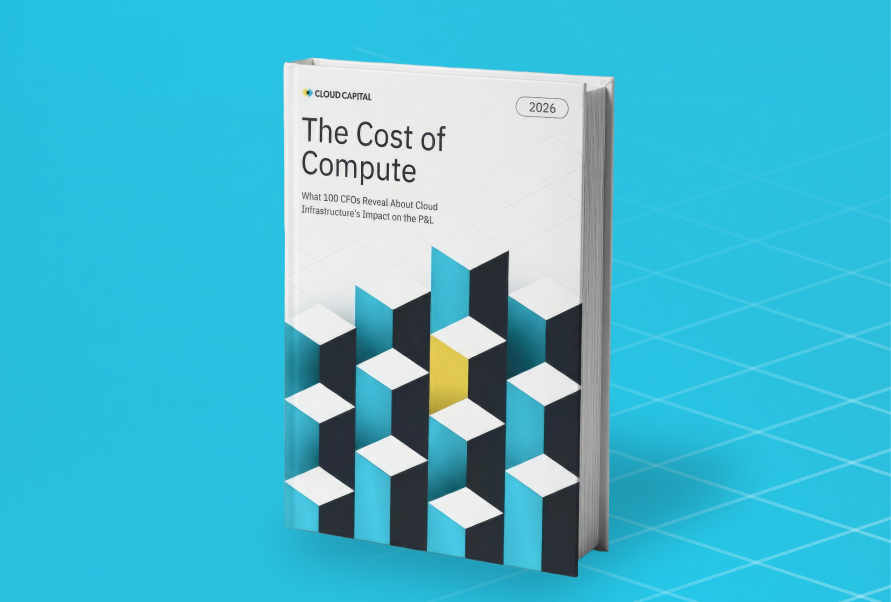
TL'DR
- The loophole era is over: AWS’s June 1 enforcement is active.
- Flexibility is gone: transfers, pooling, and resales are under scrutiny.
- Cloud commitments must now be treated as fixed liabilities
- Smart companies are rebuilding procurement models with discipline.
- Those who adapt early gain margin stability and investor trust.
The theoretical became reality on June 1st, 2025.
AWS's crackdown on cloud commitment loopholes isn't a future concern anymore, it's the current operating environment. And for those who spent months hoping the transition would be gradual or lenient, the early signals are clear: enforcement is real and non-negotiable.
If you've been following our series on this shift, you knew this day was coming. But knowing and experiencing are different things.
Now that we're operating in a post-loophole world, the question isn't whether the rules have changed but how quickly you can adapt your strategy to match the new reality.
The Flexibility You've Been Counting On Is Gone
The most critical enforcement shift: AWS has made group buying, pooling, and reallocation of commitments across customers legally prohibited. This isn't a policy preference, it's a legal boundary.
What this means in practical terms:
- No shared commitment pools across multiple customer accounts
- No vendor-managed group purchasing where one entity buys on behalf of many
- No reallocation flexibility to move unused commitments between customers
- No arbitrage models that depend on redistributing commitment capacity
Why This Matters for Your Financial Planning
Group buying was the foundation of how many cost optimization strategies worked. Vendors could aggregate demand across dozens of customers, secure better rates, and then redistribute savings. That entire model is now banned under AWS terms.
For business leaders, this creates immediate financial clarity:
every cloud commitment is now a direct obligation on your books. No pooling arrangement can bail you out if usage shifts. No group purchasing power can rescue an overcommitted position.
The Reality Check
If your current cloud cost strategy assumed:
- A vendor could "optimize" your commitments later
- Excess capacity could be reallocated elsewhere
- Group purchasing would deliver ongoing savings
Those assumptions are now invalid. Every commitment decision must be evaluated as a standalone financial obligation, just like any other major enterprise contract.
This isn't a temporary enforcement phase, it's the new permanent structure of cloud commitments. Companies that adjust their planning frameworks now will avoid the margin compression and cash flow surprises that companies still operating under old assumptions will face.
Assume Maximum Enforcement Going Forward
Operate under the assumption that all previous flexibility is gone. This isn't just a policy adjustment. AWS is finally treating cloud commitments like the financial instruments they were always meant to be.
In any other sector, a multi-year, multi-million-dollar commitment would come with strict terms and limited flexibility. Cloud has been the exception, not the rule.
What AWS is doing aligns with how mature financial markets operate: clear terms, predictable enforcement, and consequences for misuse. From their perspective, they're not being punitive, they're being professional.
And for finance leaders, this actually creates clarity. Instead of navigating ambiguous policies and hoping vendor tricks will work, you now have a clear framework to plan within.
Building a Sustainable Cloud Cost Strategy
The companies that thrive in this new environment will be those that move decisively. Here's your tactical playbook:
1. Re-audit Your Commitment Footprint Immediately
Don't assume your last audit is still valid. The rules have changed, which means your risk profile has changed. You need current visibility into every Reserved Instance and Savings Plan, the original business assumptions behind each commitment, and your total exposure if every commitment must be held to term.
The key question: How much of your current cost structure depends on flexibility that no longer exists?
2. Run Comprehensive Downside Scenarios
With exit strategies eliminated, stress-test your commitments against realistic business scenarios.
What happens if your infrastructure plateaus for 18 months?
What if a major service gets sunset or replaced?
What if an acquisition changes your infrastructure strategy?
For each scenario, calculate the financial impact of carrying unused commitments. This isn't just about cloud costs, it's about how stranded commitments affect gross margin, cash flow, and investor confidence.
3. Audit Your Vendors' Compliance Status
If you're working with cloud cost optimization vendors, you need updated clarity on their compliance with AWS's new policies. Ask directly:
- Are you still using pooling, transfers, or reallocation techniques?
- Have your service terms changed since June 1st?
- If AWS eliminates your current optimization methods, what happens to my savings?
- Do you have written confirmation from AWS that your model complies with the new policies?
Vague answers are red flags.
Any vendor that can't clearly explain their compliance strategy is a risk to your cost structure.
4. Rebuild Your Procurement Model for the New Reality
The old "optimize later" approach is dead. Your new procurement strategy should be built around:
- Layered commitments rather than large blocks. Consider mixing short-term and long-term commitments to maintain some flexibility while capturing savings.
- Conservative forecasting that accounts for business volatility. It's better to start with smaller commitments and scale up than to overcommit and carry dead weight.
- Risk-adjusted pricing that factors in the true cost of commitment inflexibility. A 30% discount isn't valuable if there's a 40% chance you won't use the capacity.
- Finance-first partnerships with vendors that can absorb and manage commitment risk on your behalf, rather than just optimizing what you've already purchased.
The Strategic Edge for Early Adapters
While many companies are still figuring out their exposure, the early movers are already gaining competitive advantages. When commitments behave predictably, your financial models become more reliable, no more surprises from "optimizations" that didn't work out. Companies that right-size their commitments upfront avoid the gross margin hits that come from carrying unused capacity.
AWS appreciates customers who work within their intended model rather than around it, which often translates to better support and access to new programs. Perhaps most importantly, being able to explain your cloud cost structure clearly, without hidden dependencies on vendor tricks, builds credibility with investors and leadership.
The companies getting this right aren't just surviving the transition. They're using it to build more disciplined, scalable cost structures.
Companies moving fast on this transition report:
- 15-25% improvement in cloud cost forecast accuracy
- Stronger board confidence in infrastructure planning
- Easier due diligence conversations with investors
- More productive partnerships with AWS account teams
The CFOs who lean into this change vs. resist it are building lasting competitive advantages.
Building for the New Reality
At Cloud Capital, we built our model specifically for this moment. While other vendors scramble to adapt their strategies to AWS's enforcement, our approach was designed from day one to align with AWS's intended commitment structure.
Here's how we're different:
- No reliance on pooling or grey-area tactics. Our model works by underwriting commitment risk directly, not by circumventing AWS policies. We're not just compliant, we strengthen the integrity of the commitment system.
- Customers get savings and protection. You access the same long-term pricing as traditional commitments, but without carrying the risk on your balance sheet. If your usage changes, we absorb the exposure.
- Complete transparency. Every aspect of our pricing and risk management is designed to be understood by finance teams. No black boxes, no dependencies on tactics that might disappear.
We've been preparing for this moment because we knew it was inevitable. AWS needed to restore discipline to their commitment programs, and we built a solution that works within that framework, not against it.
Lead with Discipline, Not Damage Control
The technology and finance leaders who emerge strongest from this transition will be those who see it as an opportunity to build better systems, not just fix broken ones. This is your chance to establish true ownership over your cloud cost structure, build forecasting models that actually reflect commitment behavior, and create transparency that builds confidence with your board and investors.
The reckoning isn't something to fear, it's the market finally maturing to a point where professional financial management matters more than clever workarounds. Your response to this moment will define your cloud cost strategy for years to come.
Companies that adapt quickly and thoughtfully will not just survive the transition, they'll set the new standard for cloud financial management. The era of hoping your vendor will figure it out is over. The era of taking direct control has begun.
Ready to take control of your cloud commitment exposure? We’re helping CFOs and CTOs lead through this transition with confidence and clarity, no pitch, just insight.


FAQs

















